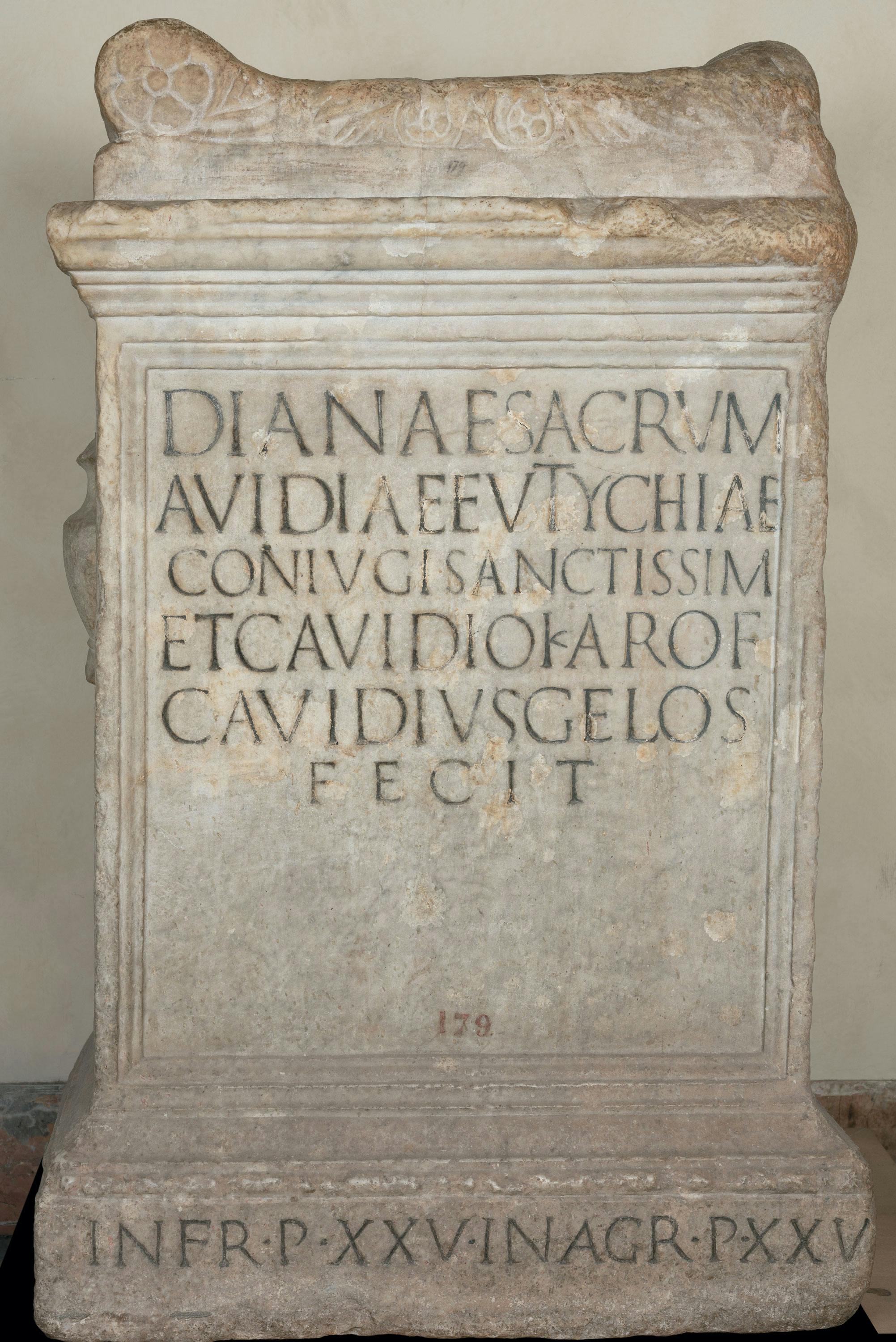Altar in honour of Avidia Eutychia and her son
Roman art
The dedication by C. Avidio Gelos to his wife Avidia Eutychia and his son C. Avidius Caro is inserted in a large burial area, 25 feet long and just as wide, which probably also hosted a sacellum in honour of the goddess Diana. Here, she takes the place of the Manes gods as protector of the dead and Avidia Eutychia may be implicitly associated with her cult in this private space. In view of the cognomina of Greek origin and the lack of patronymics, here too we find ourselves dealing with a family of freedmen, whose life span can be dated to the 2nd century AD, both due to the characteristics of the text and for the adjective sanctissima used to praise Avidia Eutychia. In the 2nd century, this term, took the place of the generic benemerens ("well deserved") or of the more specific pudica or lanifica (in the sense of "respectful of the duty of modesty" and "industrious") to indicate matronly excellence. Pliny the Younger used it to praise the Augusta Plotina, wife of Prince Trajan (98-117 A.D.), and on the basis of his example men of all social classes used it to demonstrate the adherence of their spouse to the female ideal of reference, now represented by the empress. Avidius Gelos, a successful freedman, followed suit, praising his wife according to the highest standards of the time and perhaps going so far as to make her the object, again following the model provided by the imperial house, of a form of private deification.
The precise place where the altar was found is not known, but it certainly came from a Roman workshop; the first mention of its presence dates it to Villa Medici on the Pincio Hill in Rome, where it was seen and drawn in the first half of the 17th century.
Non è noto il preciso luogo di ritrovamento dell’ara, sicuramente di officina romana; è attestata per la prima volta a Villa Medici sul Pincio, a Roma, dove fu vista e disegnata nella prima metà del XVII secolo.
3D model in collaboration with Indiana University.
Visit http://www.digitalsculpture.org/florence/
